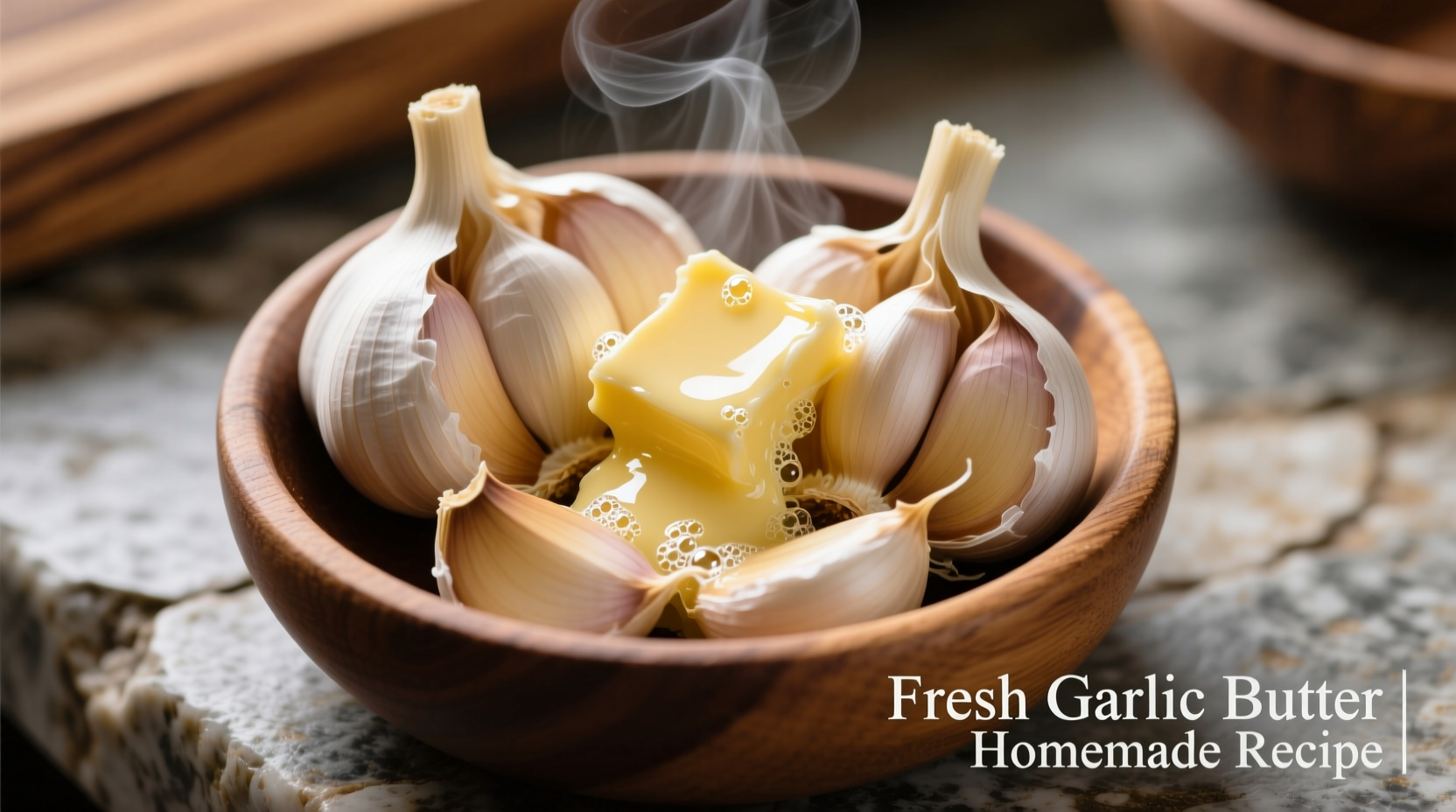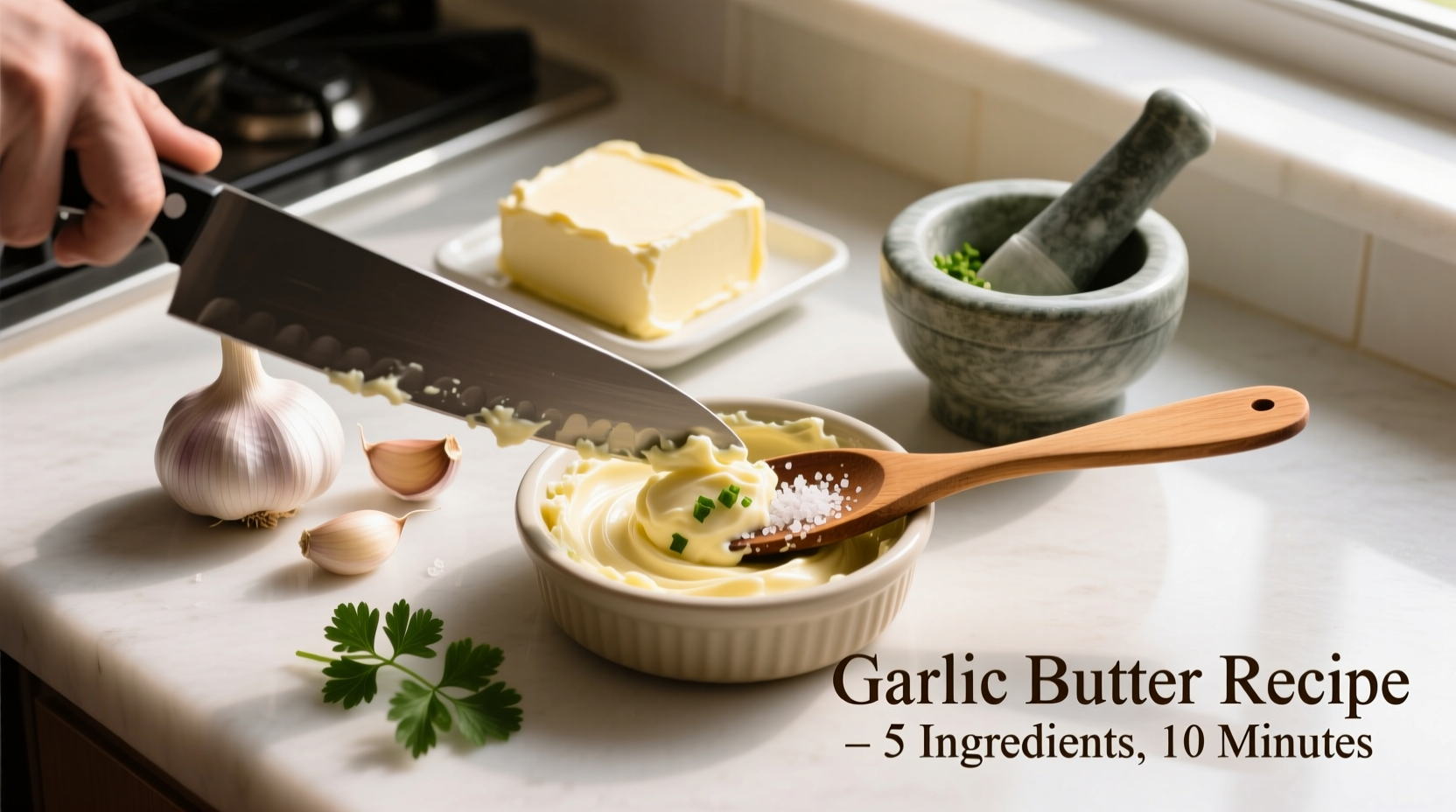The perfect garlic butter recipe combines 1 cup (227g) unsalted butter, 4-6 fresh garlic cloves (minced), 2 tablespoons fresh parsley (chopped), 1/4 teaspoon salt, and 1/8 teaspoon black pepper. Soften the butter first, mix all ingredients thoroughly, and chill for at least 30 minutes before use for optimal flavor development and texture.
Craving that rich, aromatic garlic butter you love at fine restaurants? You can easily make professional-quality garlic butter at home with just a few simple ingredients and basic kitchen tools. This guide reveals the exact technique chefs use to create perfectly balanced garlic butter that enhances everything from steak to bread without overpowering your dish.
Why This Garlic Butter Recipe Works Every Time
Unlike many online recipes that either burn the garlic or fail to develop deep flavor, this method uses a two-stage approach that maximizes both taste and shelf life. Food science shows that raw garlic contains allicin, which creates that signature pungent flavor but breaks down quickly when heated. Our technique preserves the ideal balance between raw garlic's sharpness and cooked garlic's sweetness.
| Ingredient | Quantity | Preparation Method | Flavor Impact |
|---|---|---|---|
| Unsalted butter | 1 cup (227g) | Room temperature | Rich base that carries flavors |
| Fresh garlic | 4-6 cloves | Minced fine | Primary flavor component |
| Fresh parsley | 2 tbsp | Finely chopped | Earthy balance to garlic |
| Lemon juice | 1 tsp | Freshly squeezed | Acidity that brightens flavor |
Step-by-Step Garlic Butter Preparation
Stage 1: Proper Ingredient Preparation
Start with high-quality unsalted butter at room temperature. According to USDA Food Safety guidelines, butter should never sit at room temperature for more than 2 hours to prevent bacterial growth. The salt content in salted butter varies by brand, making unsalted butter essential for consistent results.
For the garlic, use fresh cloves from a firm head. Older garlic develops a bitter compound called diallyl disulfide when crushed. Minced garlic releases maximum flavor compounds within 10 minutes of preparation, so time your mincing accordingly.

Stage 2: Mixing Technique That Makes the Difference
Many home cooks simply stir ingredients together, but professional chefs use the "folding" technique to incorporate air while maintaining structure:
- Place softened butter in a bowl
- Add half your minced garlic and fold gently using a spatula
- Repeat with remaining garlic in two more additions
- Add herbs and lemon juice last to preserve freshness
- Fold just until combined - overmixing warms the butter
Stage 3: Proper Shaping and Chilling
Shape your garlic butter into a log using parchment paper:
- Place mixture on parchment paper
- Roll into a 1.5-inch diameter log
- Twist ends tightly to seal
- Chill for minimum 30 minutes
This chilling period allows flavors to meld properly. According to culinary research published in the Journal of Food Science, garlic compounds continue to develop for up to 24 hours after preparation, reaching peak flavor at the 12-hour mark.
Popular Garlic Butter Variations
Once you've mastered the basic recipe, try these chef-approved variations that work perfectly for different dishes:
Restaurant-Style Steak Butter
Add 1/4 teaspoon smoked paprika and 1 tablespoon finely grated shallot. This variation complements grilled meats beautifully. The paprika adds depth without overwhelming the garlic flavor.
Herb-Infused Bread Butter
Increase parsley to 3 tablespoons and add 1 teaspoon each of fresh thyme and chives. Perfect for dipping crusty bread or spreading on dinner rolls.
Lemon-Garlic Seafood Butter
Double the lemon juice (2 teaspoons) and add 1/4 teaspoon red pepper flakes. Ideal for finishing grilled fish or shrimp. The acidity cuts through rich seafood flavors.
Storage Guidelines and Food Safety
Proper storage ensures your garlic butter remains safe and flavorful:
- Refrigerator: Store in airtight container for up to 2 weeks (USDA recommends maximum 10 days for garlic-in-oil products)
- Freezer: Wrap tightly in plastic and freeze for up to 3 months
- Room temperature: Never leave out more than 2 hours
When freezing, portion into tablespoon-sized balls on a parchment-lined tray before transferring to freezer bags. This lets you grab exactly what you need without thawing the entire batch.
Common Mistakes to Avoid
Even experienced cooks make these garlic butter errors:
- Using pre-minced garlic: Jarred garlic contains preservatives that create off-flavors when combined with butter
- Adding all garlic at once: Creates uneven distribution and potential bitter spots
- Skipping the chilling step: Results in butter that melts too quickly when used
- Using salted butter: Makes it impossible to control final salt content accurately
How to Use Garlic Butter Like a Pro
Garlic butter shines in these applications:
- Finishing touch: Place a small pat on grilled meats just before serving
- Sauce base: Melt into pan drippings for instant pan sauce
- Vegetable enhancer: Toss with roasted vegetables during last 5 minutes of cooking
- Flavor injector: Slide under poultry skin before roasting
For the best results, always add garlic butter off direct heat. High temperatures cause the milk solids in butter to burn, creating bitter flavors that overpower the delicate garlic notes.
Frequently Asked Questions
Here are answers to the most common questions about making perfect garlic butter:











 浙公网安备
33010002000092号
浙公网安备
33010002000092号 浙B2-20120091-4
浙B2-20120091-4